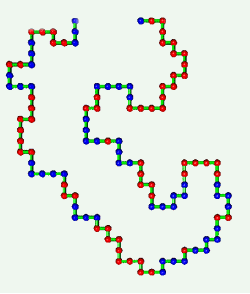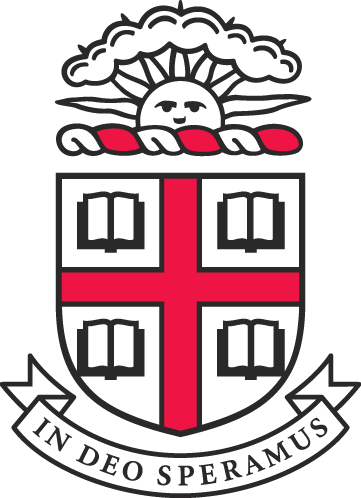Celera defends human sequence
February 19, 2004
"The publication this week (February 17, 2004) of an assessment of the quality, accuracy, and completeness of the human genome sequence produced by Celera in 2001 could reignite the controversy over the validity and independence of the data.
The article in the February 17 PNAS by Sorin Istrail and colleagues at Applied Biosystems in Rockville, Md., is in response to two papers published by members of the Human Genome Project (HGP)—the publicly funded collaboration that simultaneously sequenced the genome (PNAS, 101:1916-1921, February 17, 2004)." -Cathy Holding
Identifying an Intractable Scientific Problem
March 2001
"Some scientific problems simply cannot be solved. One such problem was identified in
2000 by computational biologist Sorin Istrail at Sandia National Laboratories, who
proved that the solution of the much-studied Ising model cannot be extended to three
dimensions (3D)."
U.S. Department of Energy, Office of Science News Release
Read the full article.
The Ising Model is NP-complete
July 17, 2000
"In 1925, the German physicist Ernst Ising introduced a simple mathematical model of phase transitions, the abrupt changes of
state that occur, for example, when water freezes or a cooling lump of iron becomes magnetic. In the 75 years since, the Ising model
has been analyzed, generalized, and computerized—but never, except in special cases, solved. Researchers managed to get exact
answers for physically unrealistic, two-dimensional systems, but have never been able to make the leap out of the plane.
There could be a good reason: The Ising model, in its full, nonplanar glory, is NP-complete.
The complexity result was announced in May by Sorin Istrail, a theoretical computer scientist at Sandia National Laboratories
(who subsequently joined Celera Genomics in Rockville, Maryland). Extending earlier work of Francisco Barahona of the
University of Chile, Istrail showed that essentially all versions of the Ising model are computationally intractable when the setting
is three-dimensional" -Barry Cipra.
SIAM News, vol. 33, No. 6
Read the full article.
MATHEMATICS: Statistical Physicists Phase Out a Dream
June 2, 2000
"For decades, the Holy Grail of statistical mechanics has been a mathematical problem known as the Ising model. Introduced in the 1920s by German physicist Ernst Ising, the Ising model is a powerful tool for studying phase transitions: the abrupt changes of state that occur, for instance, when ice melts or cooling iron becomes magnetic. Although they've learned much from approximate solutions and computer simulations, physicists have long sought an exact mathematical solution to the Ising model, which would provide much more information about such still-mysterious transitions." -Barry Cipra
Science, vol. 288, pp. 5471
Read the full article.
PHYSICS: The Ising on the Cake
April 26, 2000
Philip Ball explains why those trying to solve one of the hardest problems in physics may have been wasting their time.
Nature
Read the full article by Philip Ball
Why, in Superbowl of statistical mechanics, famous players could never cross goal line
April 24, 2000
When a lake freezes over, how do trillions of randomly oriented water molecules know at almost the same time to align themselves into crystalline form? Similarly, when iron becomes magnetized, how do trillions of atoms know to align themselves almost instantly?
Sandia National Labs Press Release, Ising
Read the full article.
Simulations nab protein-folding mistakes
March 6, 1999
"The human body manufactures thousands of different proteins, which act as enzymes, structural elements, or carriers. Each protein starts out as a long strand that must fold itself into the proper shape to perform its specific function.
To gain insights into the folding process, researchers have developed mathematical models that attempt to capture how a single strand rapidly collapses into its correct configuration (SN: 5/9/98, p. 296). New computer simulations now reveal how one protein strand can interfere with the folding of another.
This is a step toward successful protein engineering, says computer scientist Sorin Istrail of the Sandia National Laboratories in Albuquerque. It provides our first clue in how to design sequences of laboratory proteins that can survive the essential but complicated folding process." -I. Peterson
ScienceNews, Vol. 155, No 10
Read the full article by I. Peterson
To fold or not to fold

March 1, 1999
Proteins are born resembling strings of beads. Then, as shown in the computer simulation at the left, they fold in an instant into intricate patterns that make them become brain, blood, biceps, and bone. But sometimes something goes awry in the folding process. One result is disabling diseases like Alzheimer's and "mad cow" syndrome. They also cause respiration and locomotion failures because protein functions cannot be fully carried out. Yet, until now, biophysicists could only guess at what happened.
Scientific American, In Focus
Read the full story
Protein Adulstery Revealed Mechanism of protein folding captured in protein simulation
Feb. 25, 1999
"That proteins fold isn't just a good idea, it's the law -- the law of life. Proteins are born resembling strings of beads. These fold to become brain, blood, biceps, and bone. But incomplete folds cause disabling diseases like Alzheimer's and "mad cow" syndrome. They also cause respiration and locomotion failures -- aims of biowarfare -- because protein functions can't be fully carried out."
ScienceDaily
Read the full article
Prototeins
May-June 1998
"Anyone who has ever struggled to fold a roadmap should have an extra measure of respect for protein molecules, which fold up all on their own and practically put themselves away in the glove box. Protein folding is so remarkably efficient that it has been called a paradox. Thirty years ago Cyrus Levinthal pointed out that a typical protein molecule has so many possible configurations that it would need eons to explore all of them and find the best shape; yet proteins fold in seconds." -Brian Hayes
American Scientist
Read the article by Brian Hayes
Designing Life: Proteins 1, Computer 0
March 25, 1997
"LAST fall, scientists around the world, armed with their best computer programs, competed to solve one of the most complex problems in biology: how a single protein, made from a long string of amino acids, folds itself into the intricate shape that determines the role it plays in life.
Proteins consist of 20 different kinds of amino acids, strung together like beads. Once the pieces are assembled, the string twists itself into a coil, something like a telephone cord, which then bunches up into a complex tangle -- and all that has to happen before the protein can get to work in the cell. For the scientists in the contest, the challenge was to start with a sequence of amino acids and do what nature does: fold it into final form.
The result, succinctly put, was this: the computers lost and the proteins won. In a peculiar way that scientists are still trying to understand, nature can easily solve a problem -- how to fold proteins into the proper configuration -- that eludes the most powerful computers and the most powerful minds." -George Johnson
The New York Times
Read the full article by George Johnson
Computational Molecular Biology Conference Attracts O.J. Simpson Luminaries
Januray 13, 1996
"The first international conference on computational molecular biology will be held at the Eldorado Hotel in Santa Fe, N.M., from January 20-23, 1997."
Sandia Labs Release, RECOMB '97
Read more
Folding Proteins Fast
September 1995
Read this short excerpt on predicting protein structure in Science.
Science, vol. 269, pp. 1821
